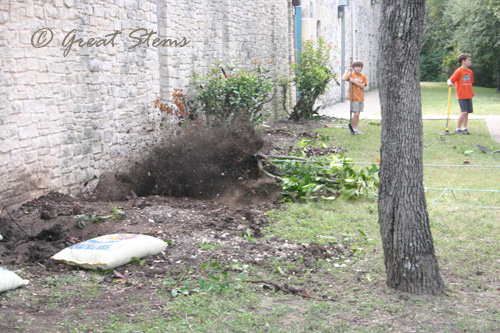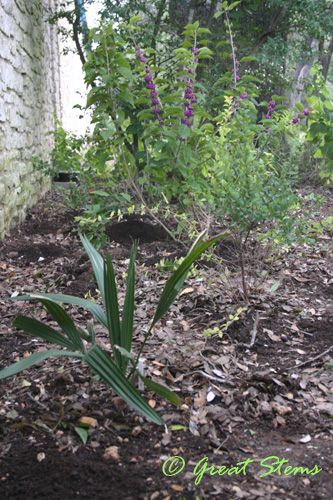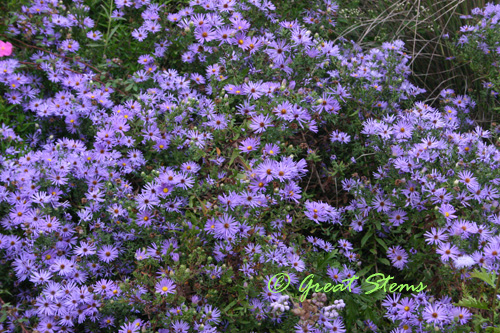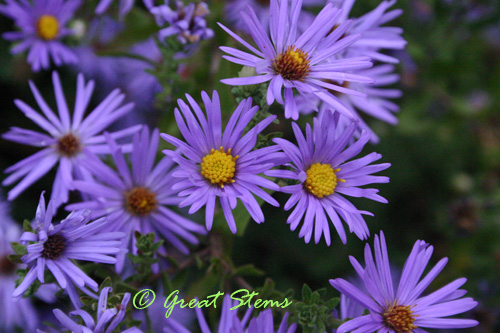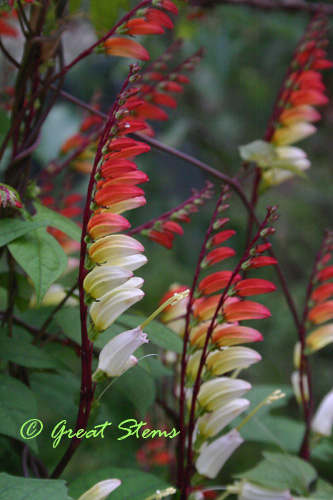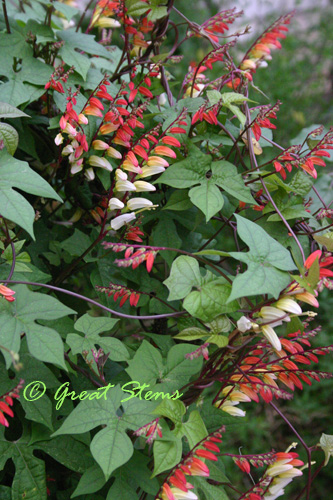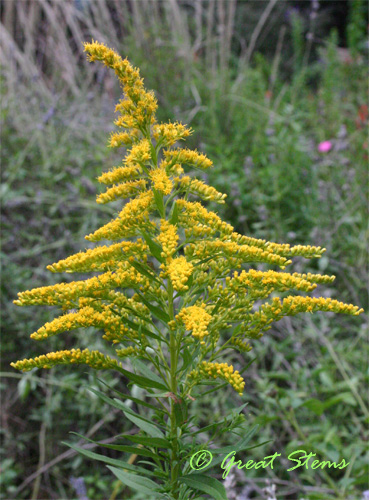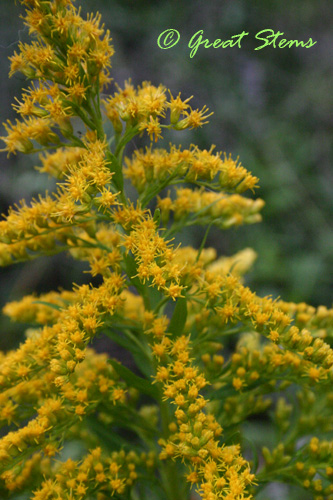The drought is hitting Texas hard — fires in West Texas, shriveled-up lakes, suffering wildlife, and many a plant succumbing to the lack of water. But my drought-hardy natives are doing relatively fine, all things considered. The garden has toughened up for the hot summer — it has had to, because I’m just not a person to water much. Sure, the plants would look more lush if we had rain, but lush doesn’t matter in a drought. Surviving does.
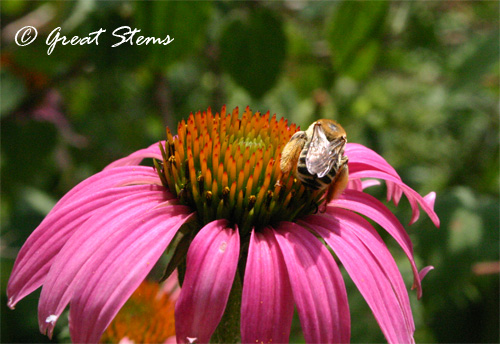
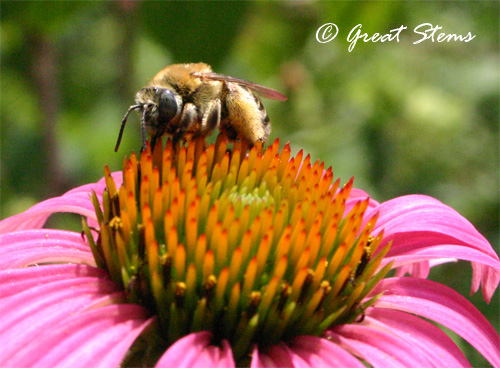
The butterflies have been relatively few this year so far, thanks to the drought, but the bees have been plentiful. We’ve seen more native bees than ever, and even our bee boxes are getting used — yippee. In particular, the wood ones in the shade are popular. The bamboo box is in the sun and to my knowledge has not been visited by any creature, bee or otherwise.
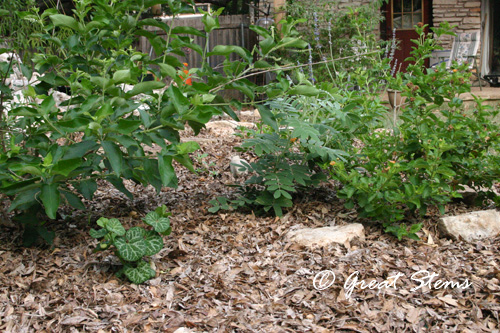 We’ve been adding plants around the raised hot-tub pond, bringing the dirt up in a sort of berm. I know it doesn’t look like much at the moment, but it will transform over time. As the plants grow, the pond will have a backdrop of taller evergreens, and the berm itself will be covered in wildlife-friendly plants of all shapes, colors, and sizes. The leaves you see are used as mulch — they are doing an excellent job of keeping any weeds under control and keeping the soil moist, and they are freeeeeeeee.
We’ve been adding plants around the raised hot-tub pond, bringing the dirt up in a sort of berm. I know it doesn’t look like much at the moment, but it will transform over time. As the plants grow, the pond will have a backdrop of taller evergreens, and the berm itself will be covered in wildlife-friendly plants of all shapes, colors, and sizes. The leaves you see are used as mulch — they are doing an excellent job of keeping any weeds under control and keeping the soil moist, and they are freeeeeeeee.
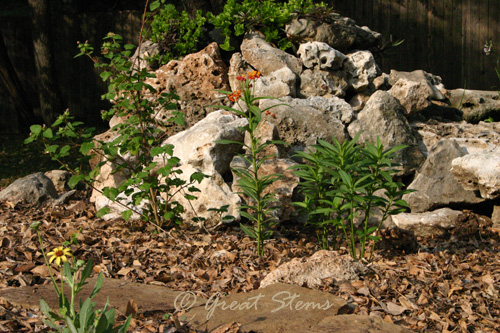 To build the berm, we used the dirt that had been dug out to form our still fantastic sun garden pathway. Amazingly, we still have at least half of the dirt left even after creating the berm — this will become additional contour somewhere else in the yard, most likely. Actually, I should back up in this story — first we dug out ugly Bermuda grass from around the pond, covered the area with cardboard and newspaper, and THEN built the berm. We also mixed in some well-needed compost.
To build the berm, we used the dirt that had been dug out to form our still fantastic sun garden pathway. Amazingly, we still have at least half of the dirt left even after creating the berm — this will become additional contour somewhere else in the yard, most likely. Actually, I should back up in this story — first we dug out ugly Bermuda grass from around the pond, covered the area with cardboard and newspaper, and THEN built the berm. We also mixed in some well-needed compost.
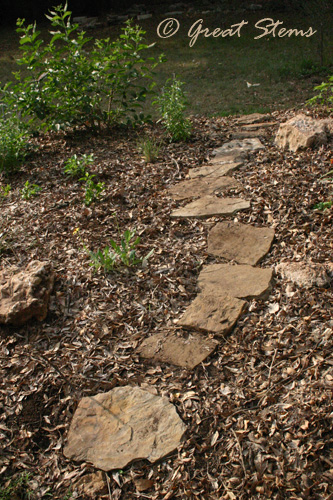
Leftover flagstone from the patio project became a pathway across the berm.
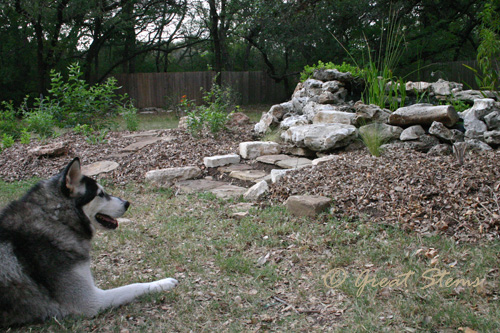
Leftover flagstone was also used to create steps to the built-in pond bench. I plan to refine the steps, but they’re a start. You can see that we don’t water grass. Bit by bit the Bermuda grass is dying out, and the Buffalo Grass is naturally taking over, particularly in the back half of the yard. This patch is still mostly Bermuda, though — die, die, die.
<Momentary pause as I observe all the mockingbirds visiting the birdbath in the front. Usually I see all the other songbirds visiting but not mockingbirds. Today they seem to be staking claim, those naughty birds. I wonder if the backyard birdbaths are dry. Or perhaps (and more likely) the shaded birdbath has cooler water. Hmmmm, I’ll revisit the water source locations, I guess.>
I’ve been transplanting plants to the berm from around the garden, and amazingly they’ve done well despite the transplant (organic seaweed during planting helps). The Texas Lantana is happier than ever before, not doing well in its first location near the pond pre-berm. We’ve got Lindheimer’s Senna, Mealy Blue Sage, Gregg’s MIstflower, Chocolate Daisy, Blackfoot Daisy, Milkweed, Missouri Primrose, Basket Grass, Engelmann’s Crag Lily, Flame Acanthus, Rock Rose, the world’s tiniest Evergreen Sumac, and non-native Almond Verbena and Dutchman’s Pipevine, with lots more to come once fall rolls around.
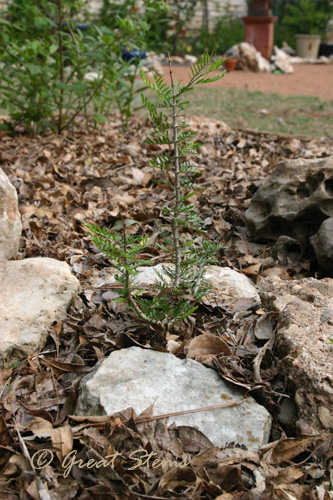 Above is a young Soapbush, Guaiacum angustifolium. It was a treasured find at the last fall Wildflower Center sale, but I didn’t get it in the ground right away and I’d almost given it up for dead by the time we made it to spring. However, just look at it now. It seems quite happy in the berm. Someday it will have the most adorable purple flowers.
Above is a young Soapbush, Guaiacum angustifolium. It was a treasured find at the last fall Wildflower Center sale, but I didn’t get it in the ground right away and I’d almost given it up for dead by the time we made it to spring. However, just look at it now. It seems quite happy in the berm. Someday it will have the most adorable purple flowers.
The wildlife moved in immediately — always a sign that we are doing something right. The sparrows flew in to see what seeds they could find in the freshly placed soil. Doves walked up the berm, and then they walked down the berm, almost like ducklings in a row. Skippers and hairstreaks and swallowtails and bees arrived to visit new blooms.The dogs love it, too. They’ve got a new obstacle to run laps around, and they’re actually using the flagstone path to cross the berm… most of the time.
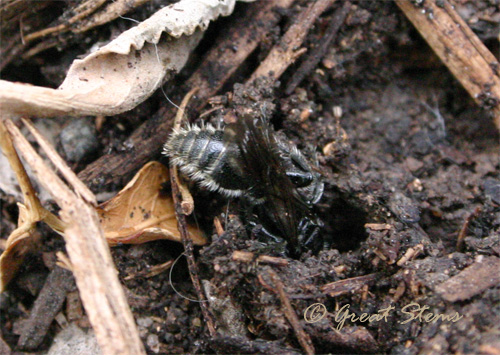 And look, a little mining bee began to work on a nest in a patch of bare earth.
And look, a little mining bee began to work on a nest in a patch of bare earth.
The drought is terrible, but there is hope for the garden. Given that the birdbaths and ponds have constant avian traffic, I know the drought is really rough on the wildlife right now. We even had a doe visit the front yard birdbath for the first time yesterday — I’ve never seen one venture this close to the house before, so she must have been really desperate.
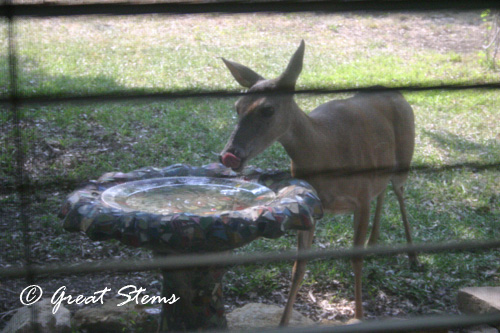 You can see her ribs, poor little skinny thing. I don’t mind the deer, but I make sure to not directly feed them (I plant unpalatable plants in the front). Without natural predators, there also isn’t a natural balance to the ecosystem as would be found in the wild — no population check. But that doesn’t mean my heart doesn’t go out to them during times like these. She can drink water from the birdbath if she likes.
You can see her ribs, poor little skinny thing. I don’t mind the deer, but I make sure to not directly feed them (I plant unpalatable plants in the front). Without natural predators, there also isn’t a natural balance to the ecosystem as would be found in the wild — no population check. But that doesn’t mean my heart doesn’t go out to them during times like these. She can drink water from the birdbath if she likes.
I do have to post a picture of my friend and neighbor Jan’s screech owl babies. I imagine they’ve fledged by now, but as soon as I heard about them, I zipped down for a picture. A-dor-a-ble!
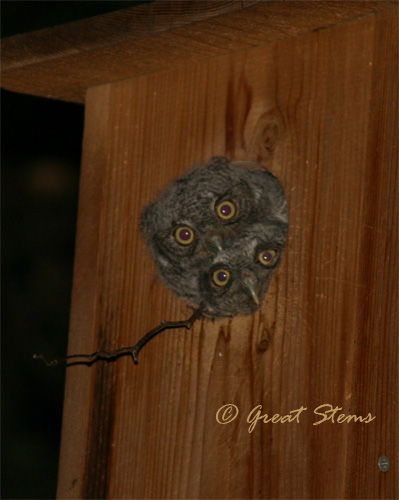
That makes two successful nests in the neighborhood this year! My husband made the boxes for Jan and for our own backyard owls following the Audubon building plans. We’ll tweak the design a little next time for easier access for cleaning, but otherwise, they are obviously good nest box designs.
I leave you with a parting image of a House Finch watching a sunflower seed fall.
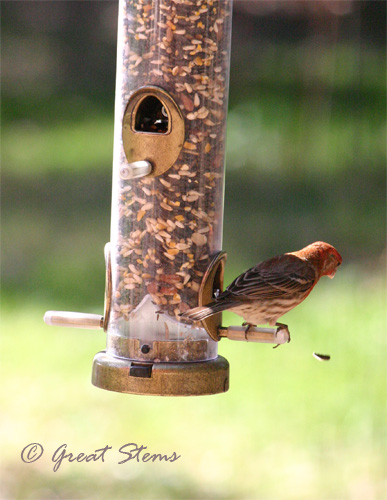 Oh, well, little finch, rest assured it won’t go to waste. There will be plenty of birds happy to collect it from below.
Oh, well, little finch, rest assured it won’t go to waste. There will be plenty of birds happy to collect it from below.
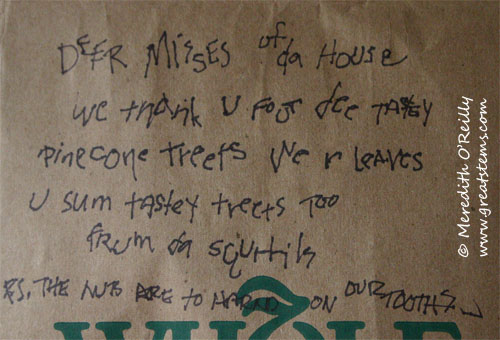
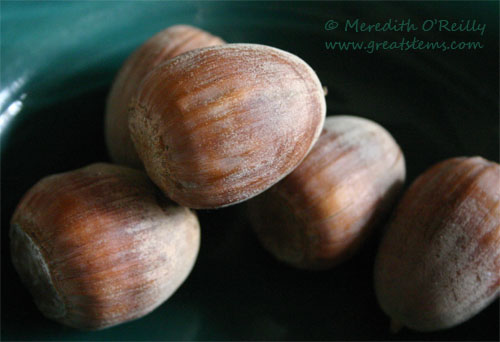 If you aren’t familiar with Bur Oaks, I have to tell you they are one of my favorite tree species. They are gorgeous and oh so majestic, wth big lobed leaves that put other oak leaves to shame. They can get to be more than 100 feet tall AND wide. I’ve dreamed of having one. Of course, if I’m growing one from a baby seed, I can’t imagine it getting to its full size in my lifetime, but at least I know that it will be well on its way — assuming I can get one or more of these to germinate, that is! A new experience awaits me, and I love that.
If you aren’t familiar with Bur Oaks, I have to tell you they are one of my favorite tree species. They are gorgeous and oh so majestic, wth big lobed leaves that put other oak leaves to shame. They can get to be more than 100 feet tall AND wide. I’ve dreamed of having one. Of course, if I’m growing one from a baby seed, I can’t imagine it getting to its full size in my lifetime, but at least I know that it will be well on its way — assuming I can get one or more of these to germinate, that is! A new experience awaits me, and I love that.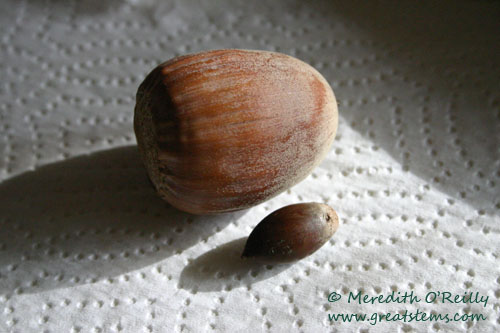 Just to give you a size comparison on the acorns, I went scrounging in the backyard to find one of our “puny” live oak acorns (it was tough — the squirrels have pretty much devoured the acorn masses from last year). The Bur Oak is like the Hagrid of all acorns.
Just to give you a size comparison on the acorns, I went scrounging in the backyard to find one of our “puny” live oak acorns (it was tough — the squirrels have pretty much devoured the acorn masses from last year). The Bur Oak is like the Hagrid of all acorns.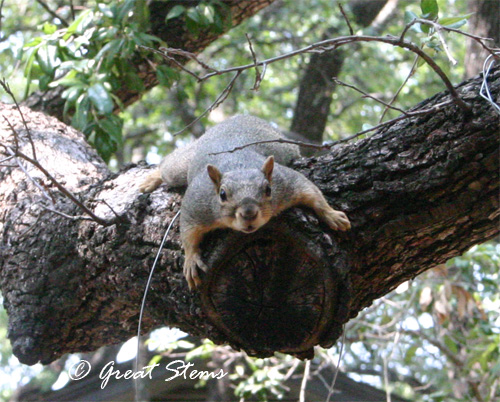
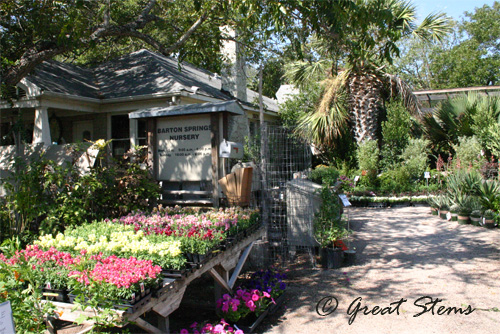
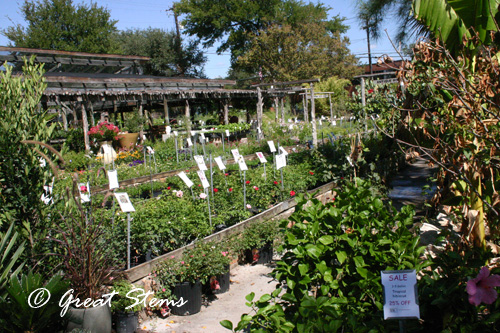
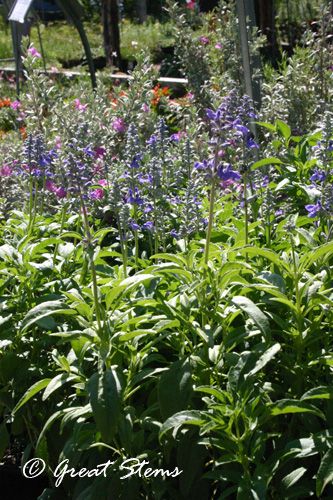
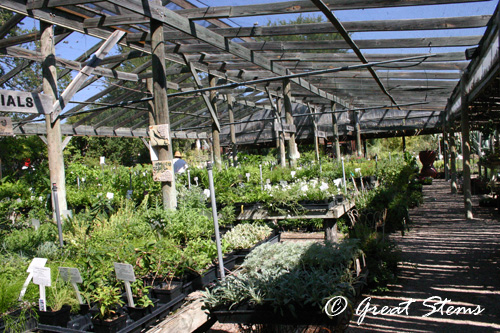
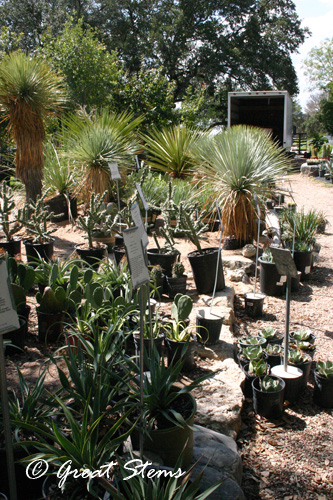 My favorite thing to do is wander all the different areas at the nursery — although to warn you, it can be a little too inspiring — I always come home with more plants than I intended. Always. They have the coolest carts, all individually named (“A La Carte” comes to mind) — rather than move the carts around, however, most people declare a cart theirs by putting a plant on it, then they leave the cart in place and periodically bring other plants back to “home base.”
My favorite thing to do is wander all the different areas at the nursery — although to warn you, it can be a little too inspiring — I always come home with more plants than I intended. Always. They have the coolest carts, all individually named (“A La Carte” comes to mind) — rather than move the carts around, however, most people declare a cart theirs by putting a plant on it, then they leave the cart in place and periodically bring other plants back to “home base.”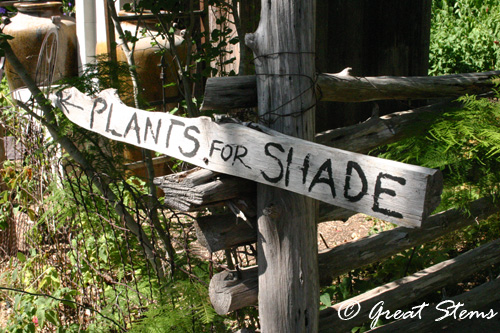
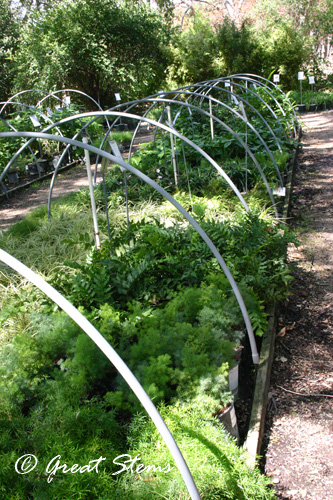
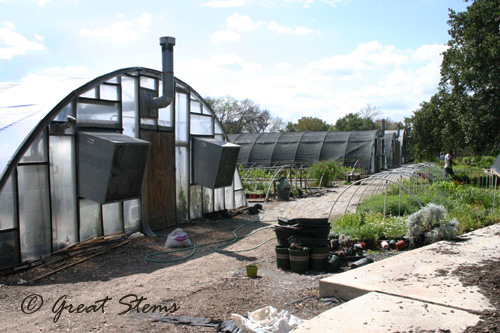
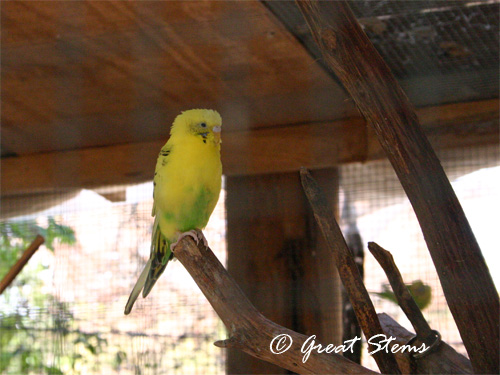
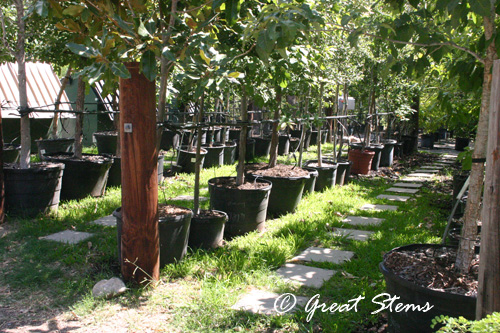
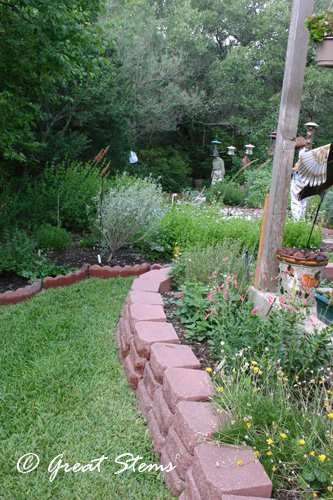
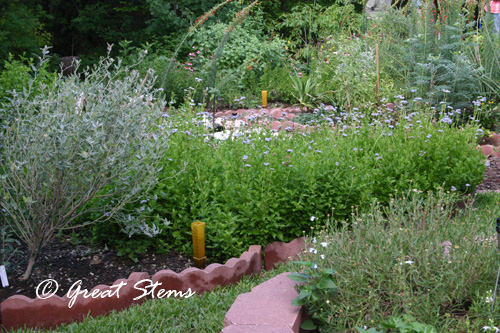
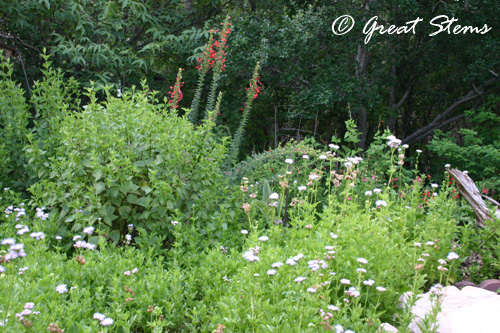
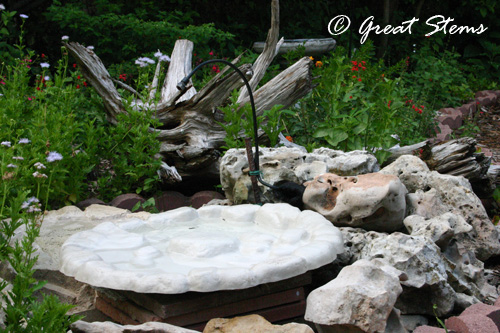
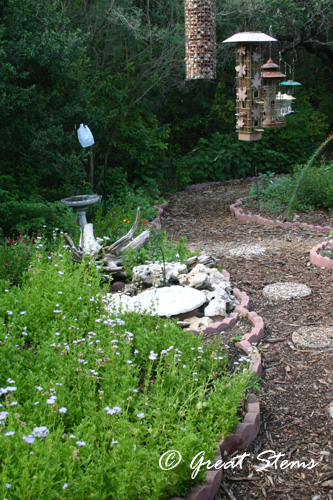
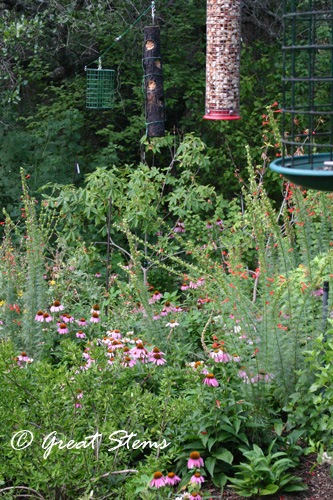
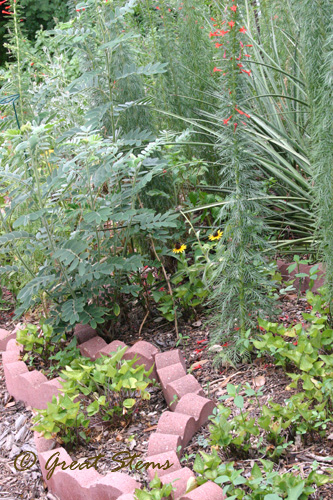
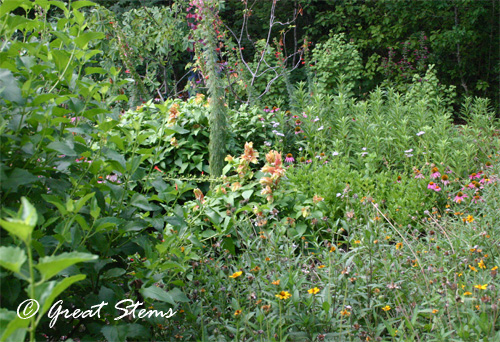
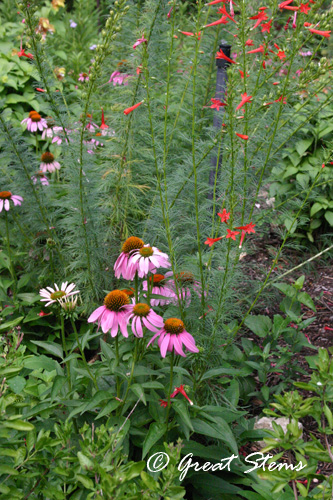
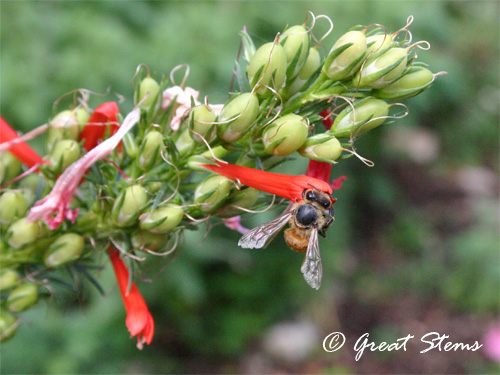 Frankly, I loved the effect, and visiting hummingbirds and bees said the same thing. Two-dimensional images just can’t do it justice.
Frankly, I loved the effect, and visiting hummingbirds and bees said the same thing. Two-dimensional images just can’t do it justice.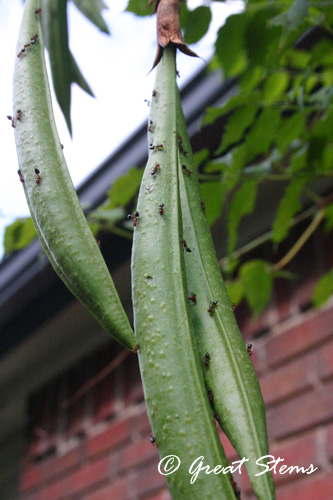
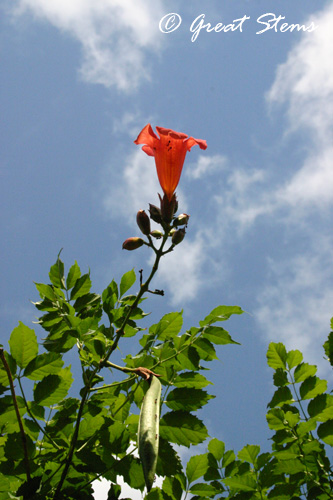
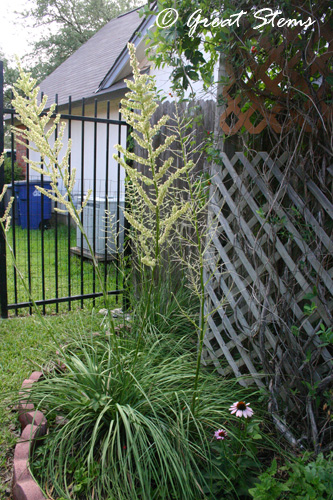
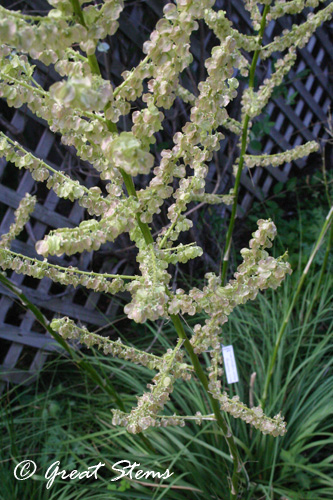


 We’ve been adding plants around the raised
We’ve been adding plants around the raised 


 Above is a young Soapbush, Guaiacum angustifolium. It was a treasured find at the last fall Wildflower Center sale, but I didn’t get it in the ground right away and I’d almost given it up for dead by the time we made it to spring. However, just look at it now. It seems quite happy in the berm. Someday it will have the most adorable purple flowers.
Above is a young Soapbush, Guaiacum angustifolium. It was a treasured find at the last fall Wildflower Center sale, but I didn’t get it in the ground right away and I’d almost given it up for dead by the time we made it to spring. However, just look at it now. It seems quite happy in the berm. Someday it will have the most adorable purple flowers.  And look, a little mining bee began to work on a nest in a patch of bare earth.
And look, a little mining bee began to work on a nest in a patch of bare earth.


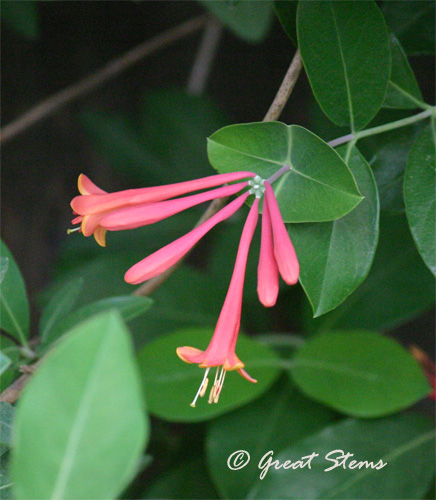 The vines are all abloom, and those that aren’t yet are at least exhibiting major growth spurts. The Coral Honeysuckle is becoming a bit of an octopus — I keep trying to train it to go over the fence, and it keeps sending out more arms to reach for the pathway instead.
The vines are all abloom, and those that aren’t yet are at least exhibiting major growth spurts. The Coral Honeysuckle is becoming a bit of an octopus — I keep trying to train it to go over the fence, and it keeps sending out more arms to reach for the pathway instead.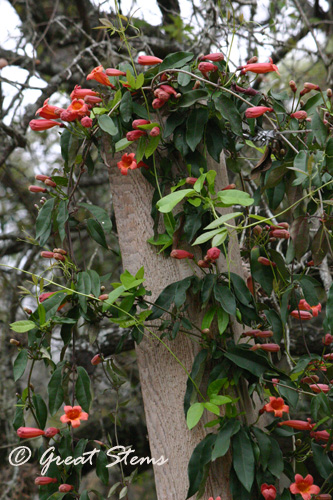
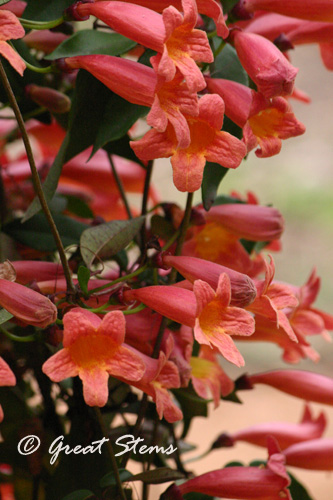 Even though it’s considered a hummingbird vine, I have yet to see one of our hummingbirds visit a crossvine bloom — they go to other plants or the feeders instead. But the bees sure went crazy for the Crossvine this year, so it must have plenty of nectar! Those finicky hummingbirds…
Even though it’s considered a hummingbird vine, I have yet to see one of our hummingbirds visit a crossvine bloom — they go to other plants or the feeders instead. But the bees sure went crazy for the Crossvine this year, so it must have plenty of nectar! Those finicky hummingbirds… 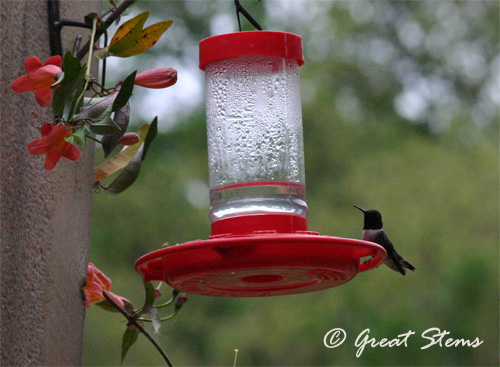 So far we’ve had male black-chinned hummingbirds this year — I’m sure they are awaiting the arrival of the females even more than we are. I wonder why I haven’t seen any Ruby-Throats yet — they are our usual visitors.
So far we’ve had male black-chinned hummingbirds this year — I’m sure they are awaiting the arrival of the females even more than we are. I wonder why I haven’t seen any Ruby-Throats yet — they are our usual visitors.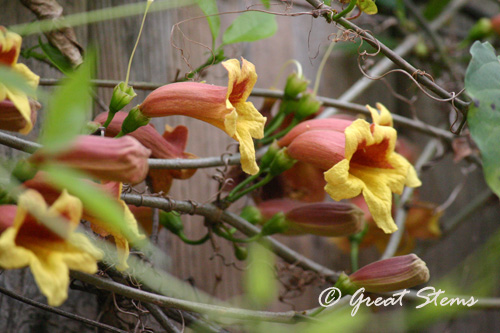
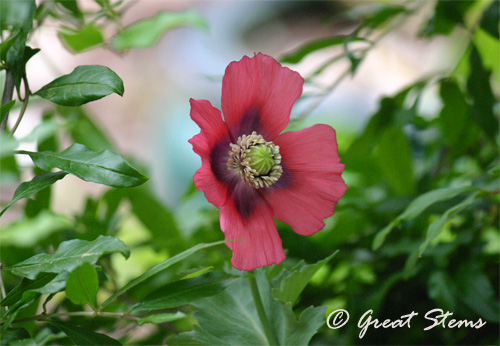
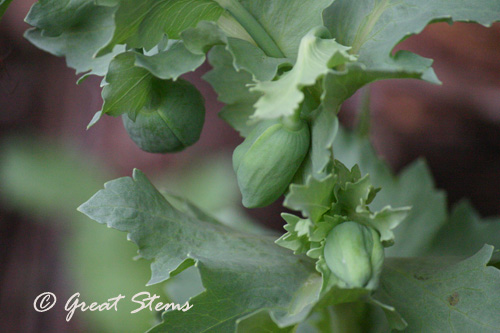
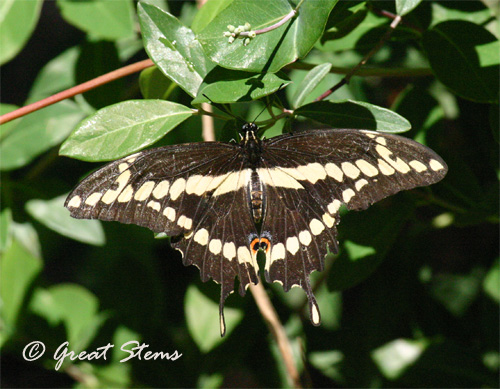
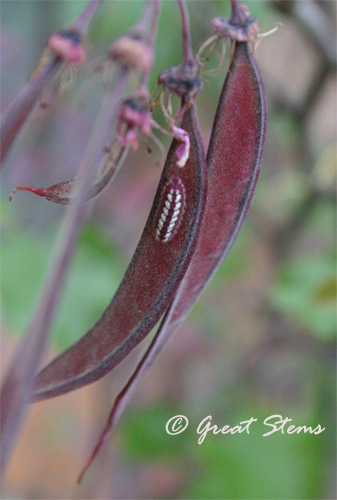
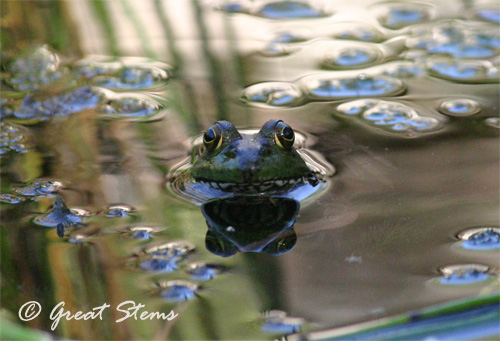
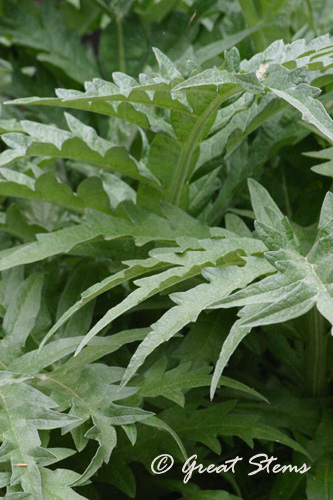
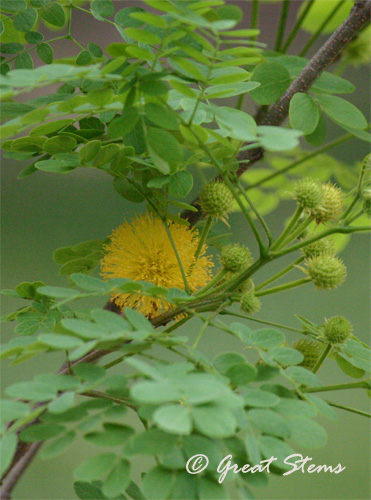
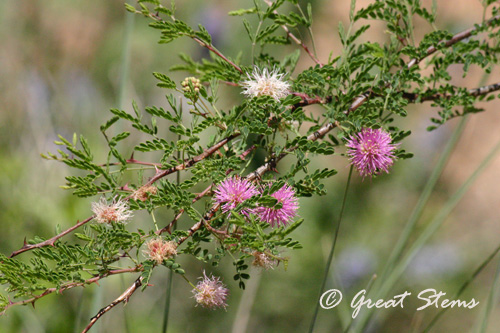
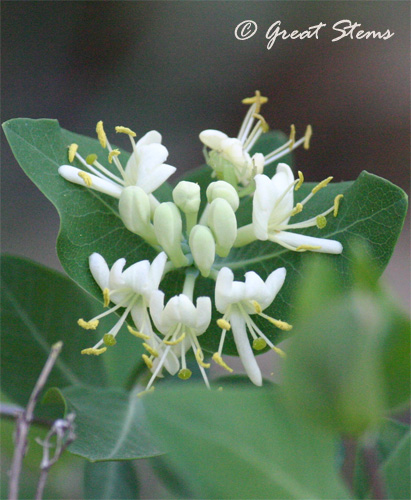
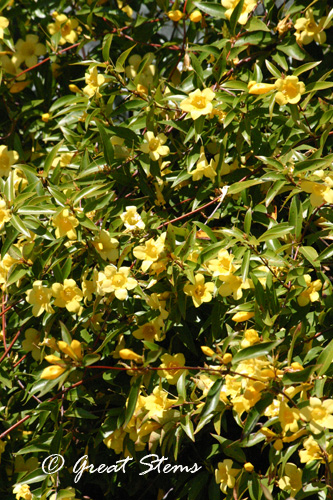
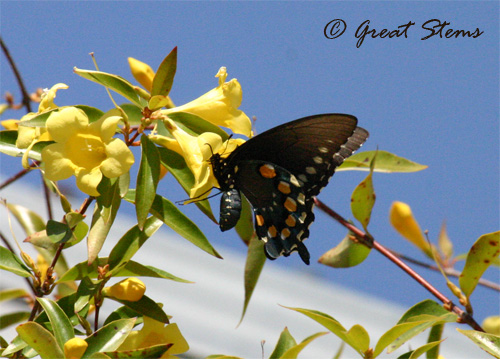
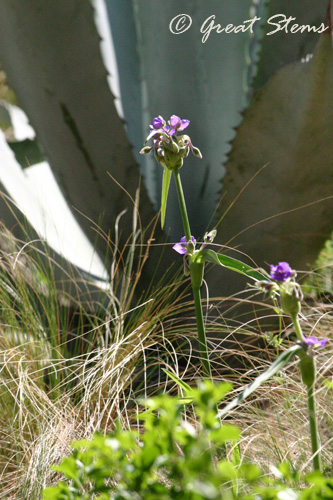
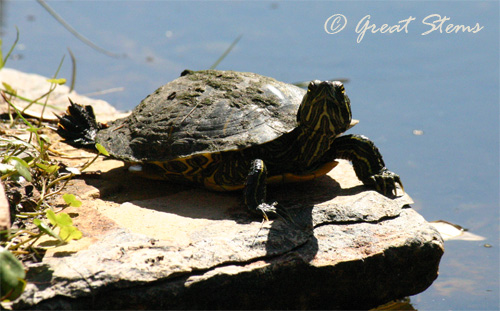
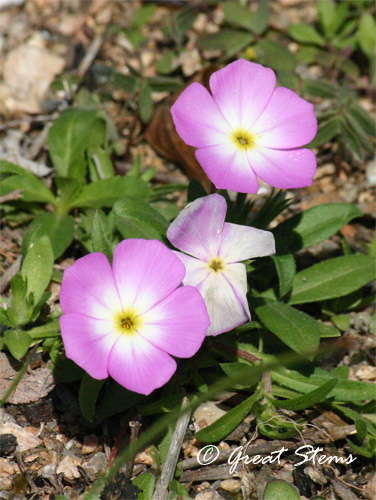
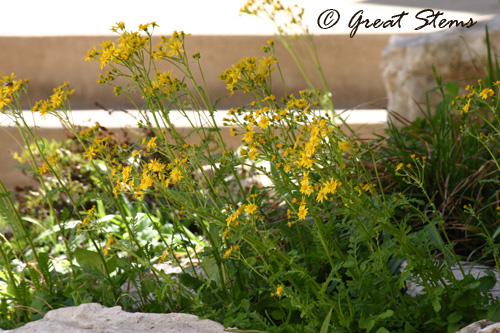 Skulls in a West Texas desert bed…
Skulls in a West Texas desert bed…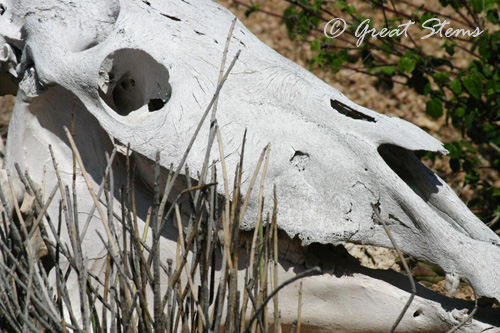
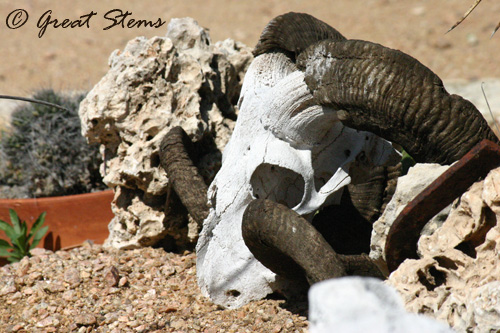
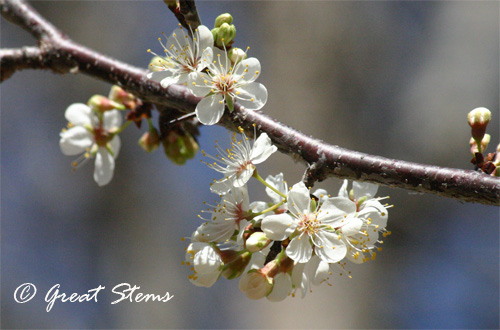
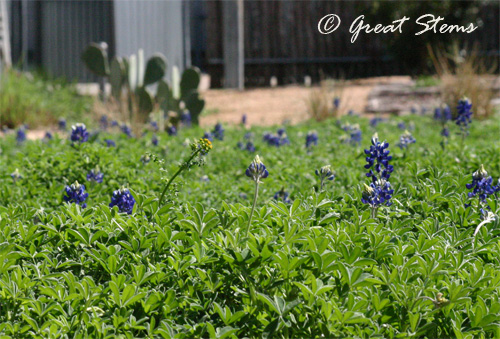
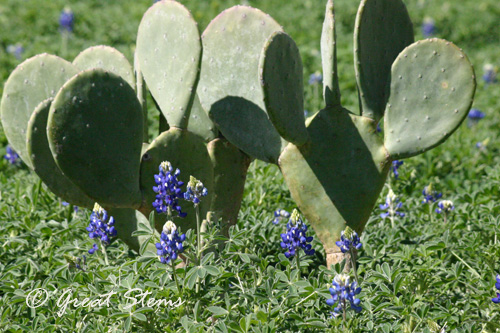
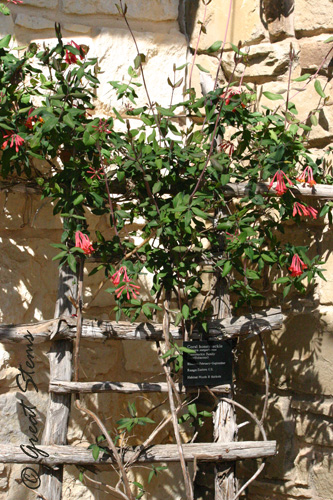
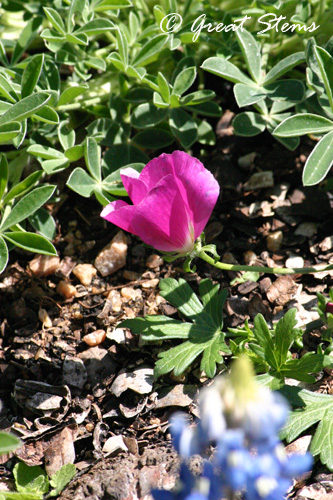
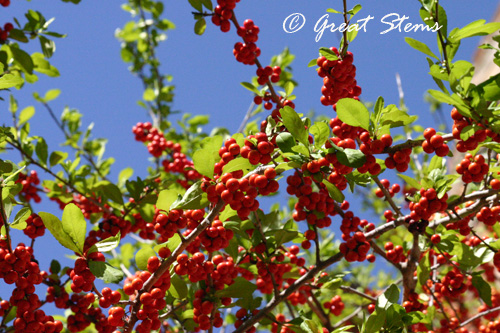
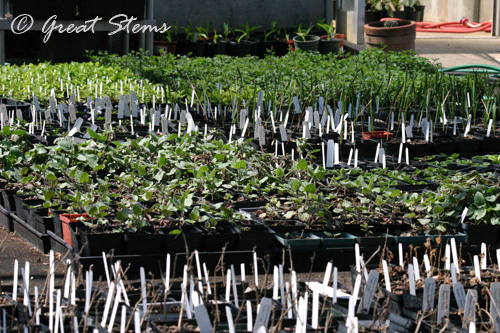
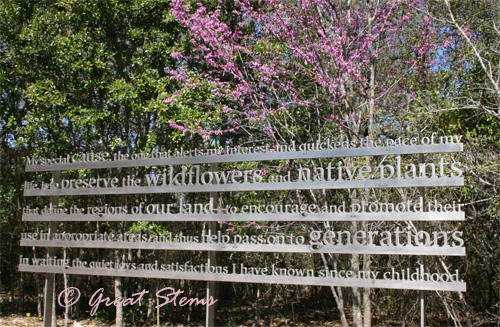
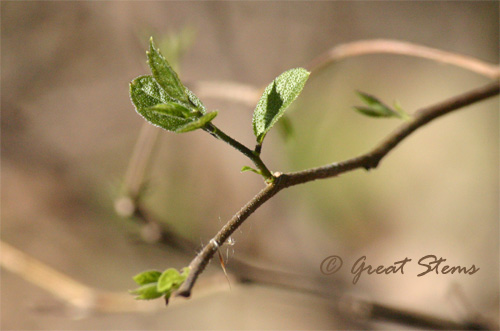
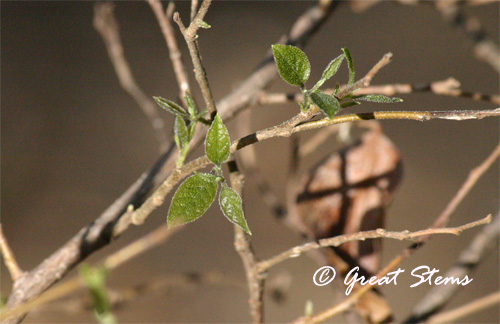 Hurray for my little tactile-pleasing sandpaper delights!
Hurray for my little tactile-pleasing sandpaper delights! 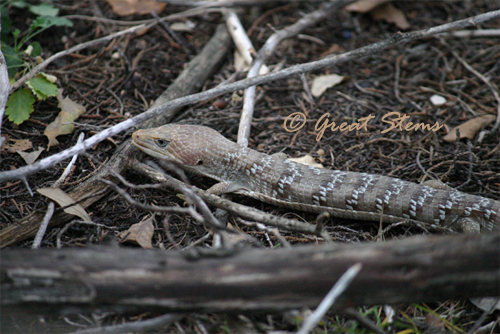
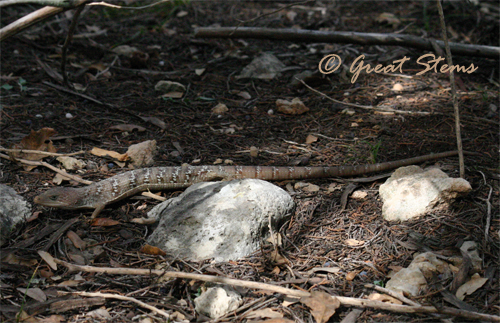
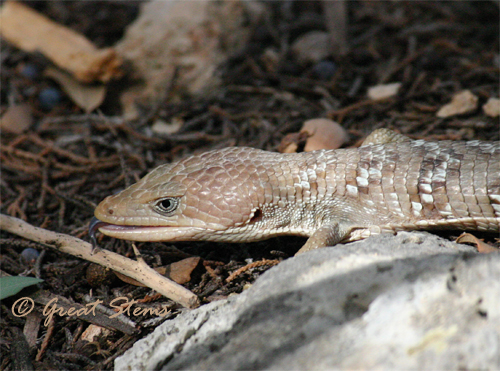 The Texas Alligator Lizard likes rocky hillsides. It moves fairly slowly on its short little legs, making it relatively easy for the biologist to capture the one at the plant rescue. Its slow movement also made it easy for me take some, you know, 100 pictures (I’m not joking). You can see by this next expression that the lizard might possibly have been getting annoyed with my zealous image-snapping.
The Texas Alligator Lizard likes rocky hillsides. It moves fairly slowly on its short little legs, making it relatively easy for the biologist to capture the one at the plant rescue. Its slow movement also made it easy for me take some, you know, 100 pictures (I’m not joking). You can see by this next expression that the lizard might possibly have been getting annoyed with my zealous image-snapping.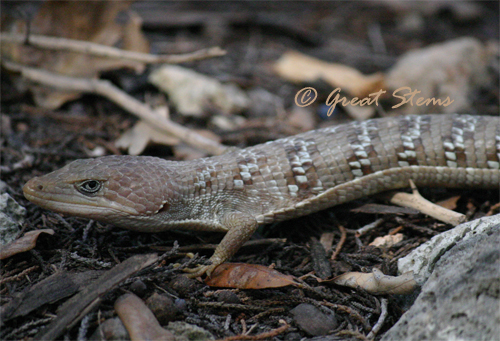
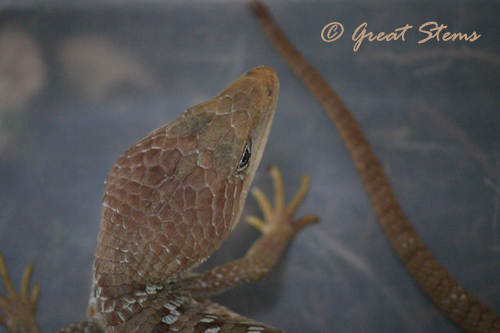
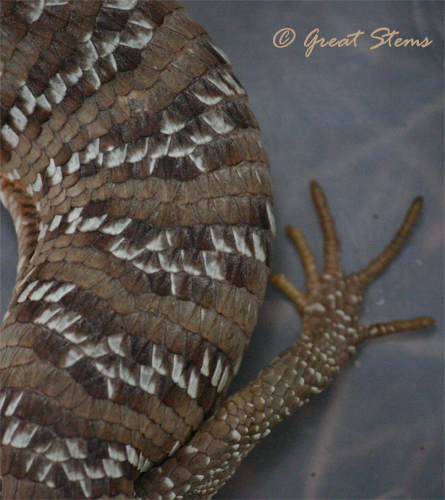 It has a blue, quick-to-flick tongue, and the neatest little digits.
It has a blue, quick-to-flick tongue, and the neatest little digits.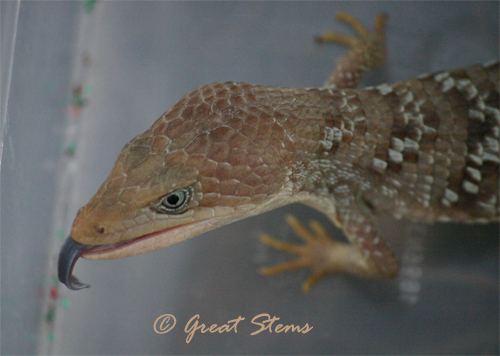
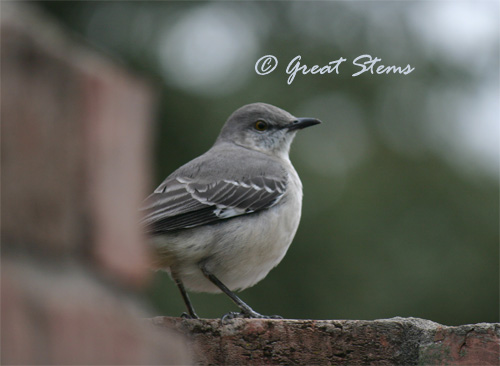
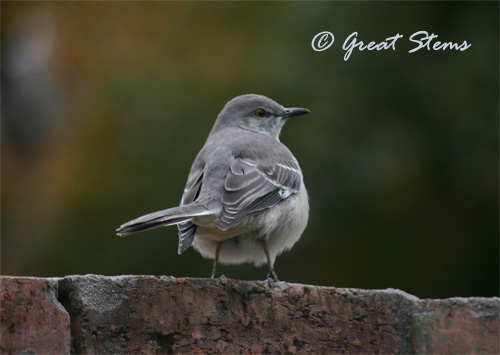
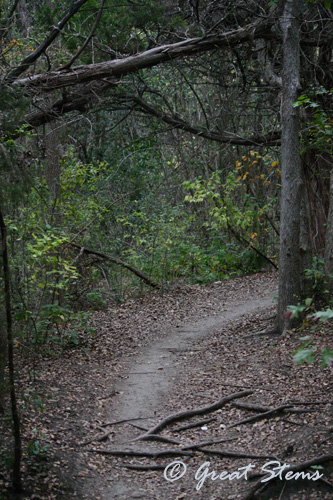
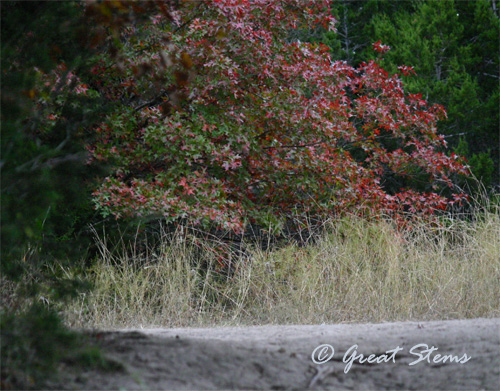
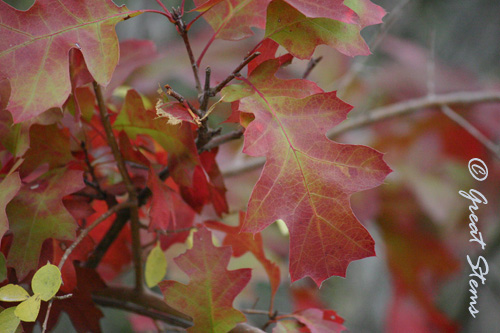
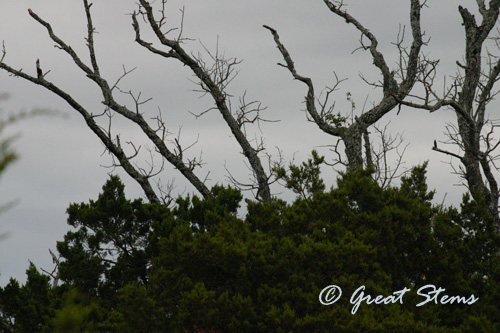
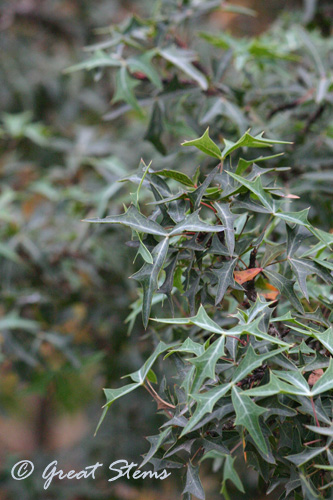
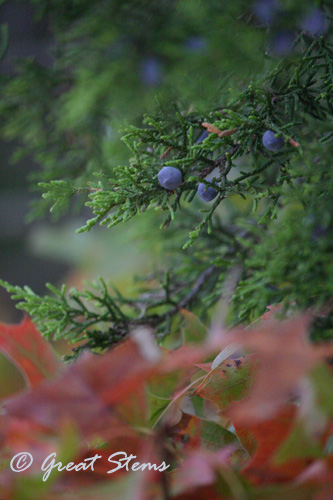
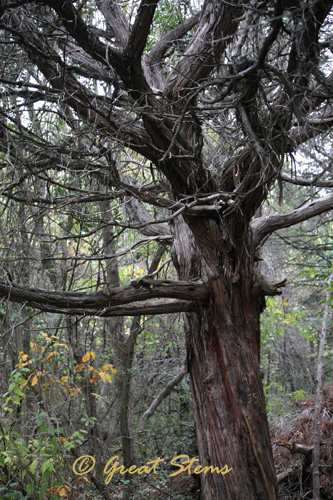
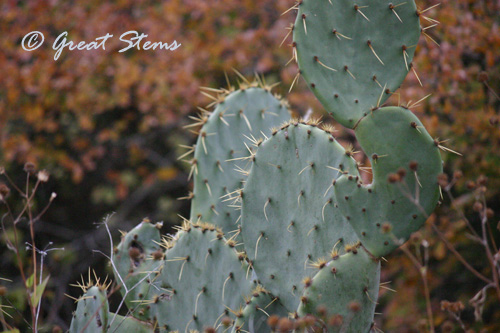
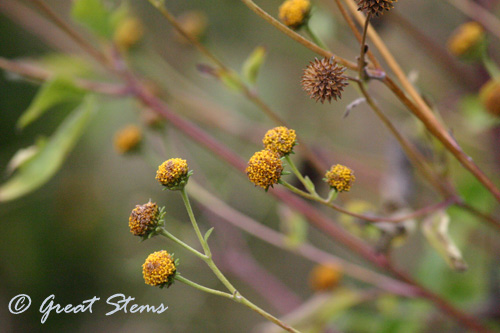
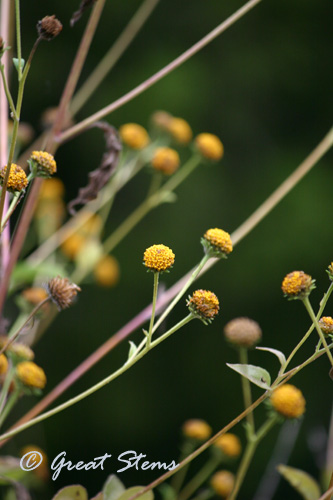
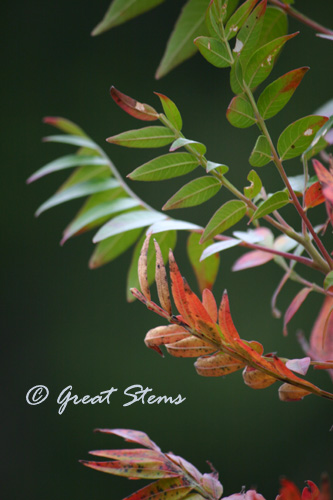
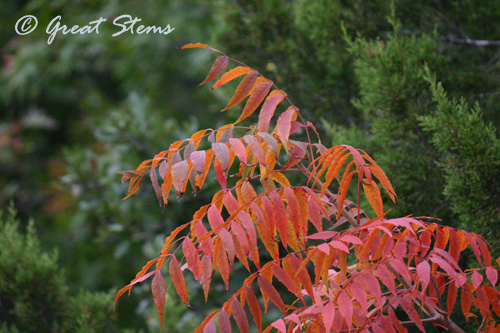
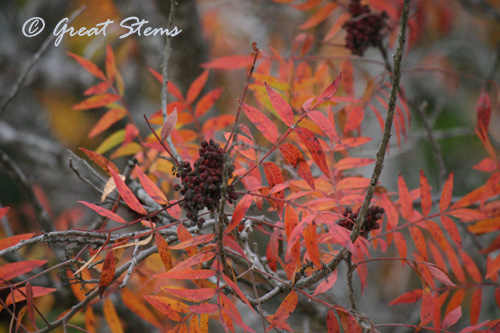
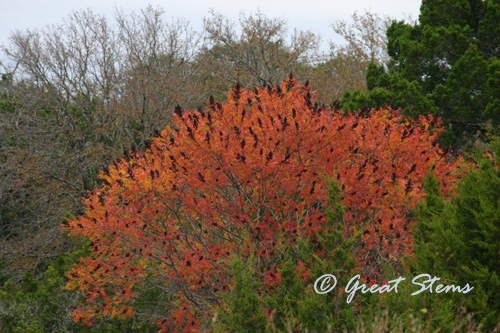
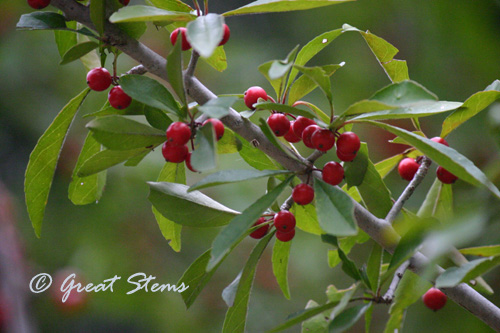
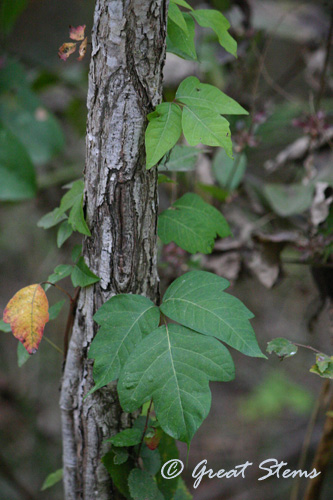
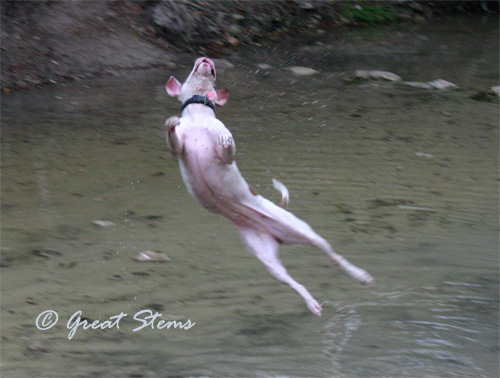
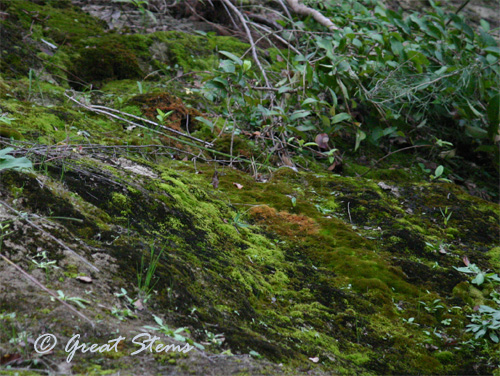
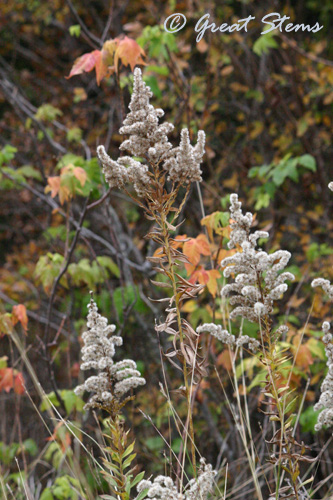
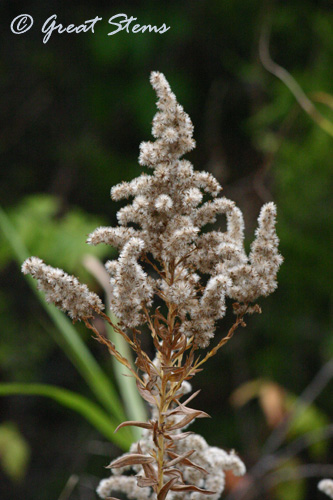
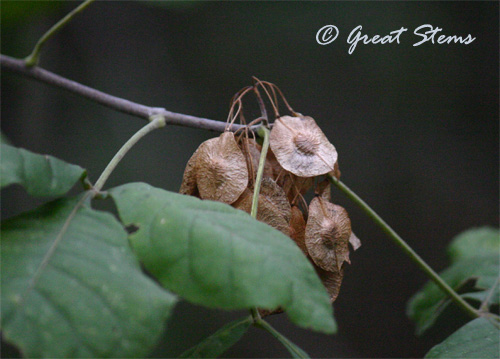
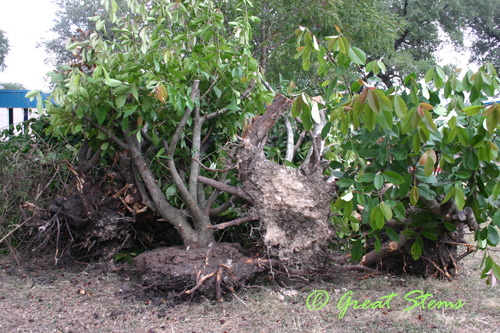 Well, haven’t I been the slacker, not posting anything on Great Stems for a few days? I’ve missed my blog. But I have an excuse. This past week I:
Well, haven’t I been the slacker, not posting anything on Great Stems for a few days? I’ve missed my blog. But I have an excuse. This past week I: